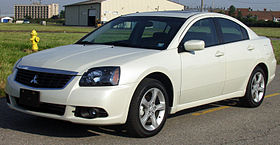With the Volkswagen Golf blue-e-motion Concept - the purely electrically powered version of the most successful European car ever built - Volkswagen is forging new ties to the era of electric mobility. More noticeably than on today's modern petrol or diesel engines, the maximum range of an electric car is severely reduced when its maximum power is demanded frequently. The concept car's 30 battery modules - consisting of 180 lithium-ion cells (energy capacity: 26.5 kWh) - were installed in spaces adapted to the vehicle architecture. They can be found in the floor of the bootspace (fully usable cargo capacity: 275 litres), under the rear bench seat and in the centre tunnel of the underbody (between the front seats). A separate air cooling system ensures a constant thermal environment in the battery compartment. The battery modules weigh a total of 315 kilograms. The driver can see how much energy is being demanded by the "electric pedal" at any given moment on the kW gauge (replaces the classic tachometer); drivers strive to keep the kW reading as low as possible practically intuitively.
 A range indicator is also integrated in this round instrument. The speedometer, located on the right side as usual, integrates another small gauge that provides information on the battery charge state. A new feature is the display of regeneration intensity in the multifunction display between the kW instrument and the speedometer. In battery regeneration, the driver has the option of pre-setting the braking energy recovery strategy over four stages (D to D3) via the automatic gearshift lever or gearshift paddles on the steering wheel. In addition, an active driving profile can be set; this lets the driver select priorities in advance: between maximum range, maximum comfort and maximum dynamics. The selected profile then pre-configures the power of the electric motor, air conditioning control, maximum speed and battery regeneration strategy. 85 kW of power is available; in this mode the Golf blue-e-motion can attain the specified top speed of 135 km/h.
A range indicator is also integrated in this round instrument. The speedometer, located on the right side as usual, integrates another small gauge that provides information on the battery charge state. A new feature is the display of regeneration intensity in the multifunction display between the kW instrument and the speedometer. In battery regeneration, the driver has the option of pre-setting the braking energy recovery strategy over four stages (D to D3) via the automatic gearshift lever or gearshift paddles on the steering wheel. In addition, an active driving profile can be set; this lets the driver select priorities in advance: between maximum range, maximum comfort and maximum dynamics. The selected profile then pre-configures the power of the electric motor, air conditioning control, maximum speed and battery regeneration strategy. 85 kW of power is available; in this mode the Golf blue-e-motion can attain the specified top speed of 135 km/h.
When the driver activates the "Normal" mode, power is reduced to 65 kW and top speed is lowered to 115 km/h. 50 kW; in this case, the car can reach a maximum speed of 105 km/h. At the same time, the air conditioning system is completely deactivated. The selected profile is shown in the multifunction display. The Volkswagen Golf blue-e-motion is charged via a plug connector behind the folding VW logo on the radiator grille. A pictogram of a plug connector in the multifunction display indicates that the charging cable is correctly inserted and locked. During active charging an LED also flashes in the charge state indicator, and the charge level shown in the indicator is continually updated. All key primary and secondary drive components were integrated in the front engine compartment. In arriving at this design, developers applied experience they had gained in numerous design studies. As in the Up! Volkswagen Golf blue-e-motion. Core components of the integral drive are the lightweight 80 kg electric motor together with a transmission and differential. Energy management is handled by a high-voltage pulse-controlled inverter that is integrated in the compact integral drive - along with the 12 Volt electrical system's DC/DC converter and charging module.
This X5 xDrive40i pounces on distant openings in traffic, rushes to speed with a muted snarl, and hits 60 mph in just 5.3 seconds, on its way to a 130-mph top speed (or 150 mph, properly equipped). The acceleration’s strong at nearly any usable engine speed, and it’s all the more impressive since an unladen X5 checks in at 4,813 pounds in xDrive40i trim, a hulking 5,170 lb as an xDrive50i. BMW says it’s undecided whether it will offer a turbodiesel in U.S.-market X5 SUVs, but a plug-in hybrid with 40-ish miles of battery-only driving will appear in 2020, as a 2021 model. Power rifles through all four wheels via an excellent 8-speed automatic that’s never caught off guard. BMW can ship more power to the all-wheel-drive system’s rear wheels in Sport mode and according to traction needs; as of yet, no rear-drive X5’s been confirmed. An available sport differential uses clutch packs to move power across the rear axle for torque-vectoring control, and an electronically controlled rear differential can act like a lock to ensure more even acceleration.